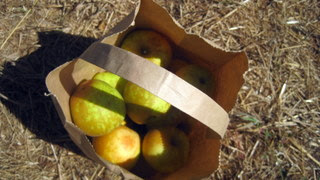Eating locally grown or produced food is a real hot-ticket item in the media. But is all the hype based on truth? In a word, yes.
Once harvested, produce begins to lose it's nutritive value. So, from a nutritional perspective, locally grown produce is healthier mainly because it travels less time from the farm to your dinner table.
Buying local produce (and other foods produced locally or regionally) is a great idea, but there can be barriers such as accessibility or limited funds. Thankfully, many grocery stores now offer local produce, which is convenient but often costly .
If you simply can't afford or are unable to buy all local produce, you're not alone. Try to buy at least some of your produce as local as possible (that can mean in your town, in your state or in the country).
Here are some tips for finding local produce and other foods at a price you can afford:
- If available, join a CSA (community supported agriculture) program to receive a weekly box of local (and often organic) produce at an affordable price.
- Shop sales and stock up when prices are low.
- Buy in season
- Purchase items in bulk and freeze for use throughout the year.
All this to say that fruits and vegetables are healthy in any form; frozen, dried, canned, etc. Barring they're not drenched in added salt or sugar, frozen, dried or canned varieties are both convenient and nutritious options.
The take home point is that priority #1 should be eating enough fruits and vegetables (think: quantity). The #2 priority is eating locally grown produce (think: quality).






No comments:
Post a Comment